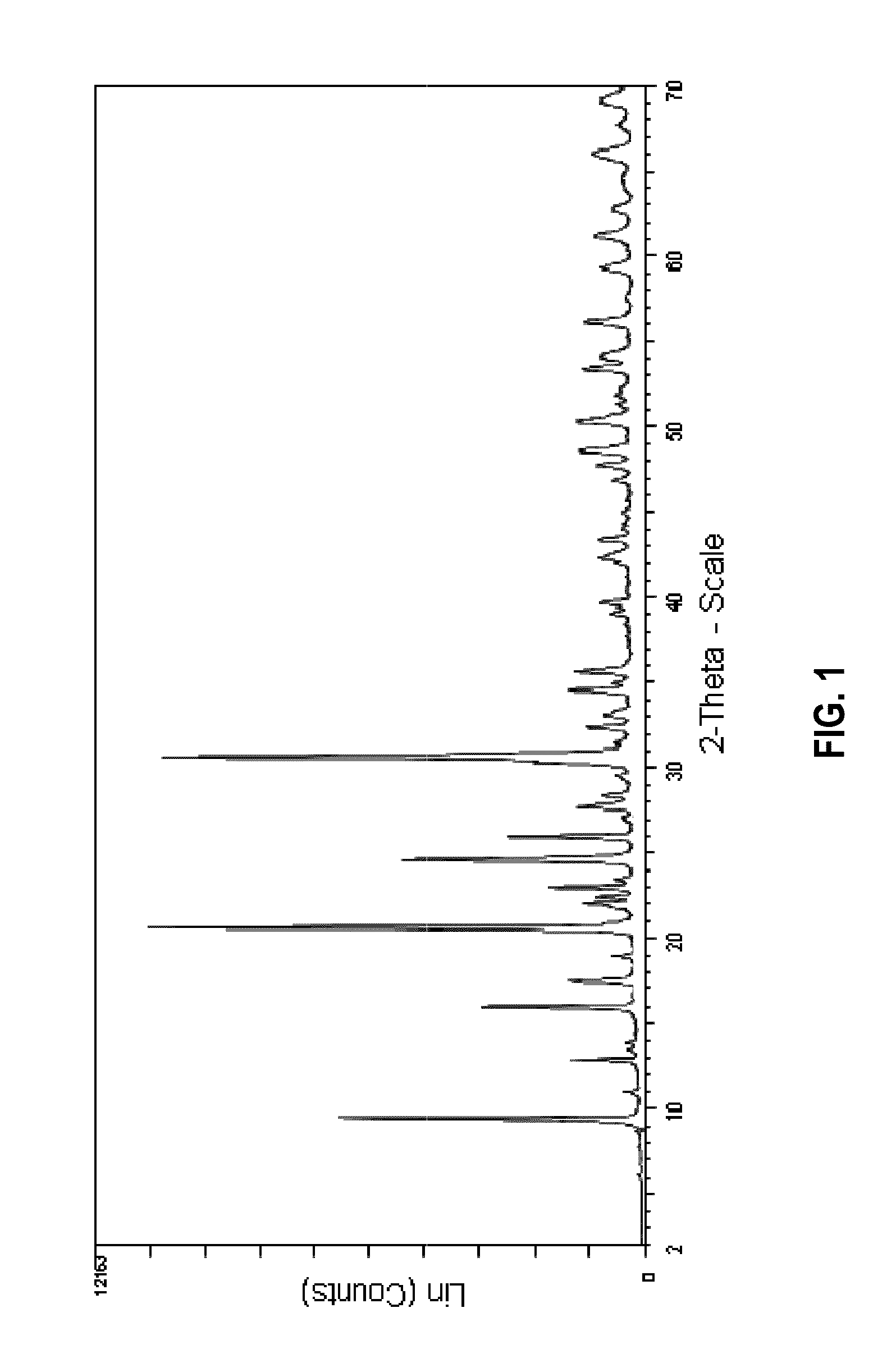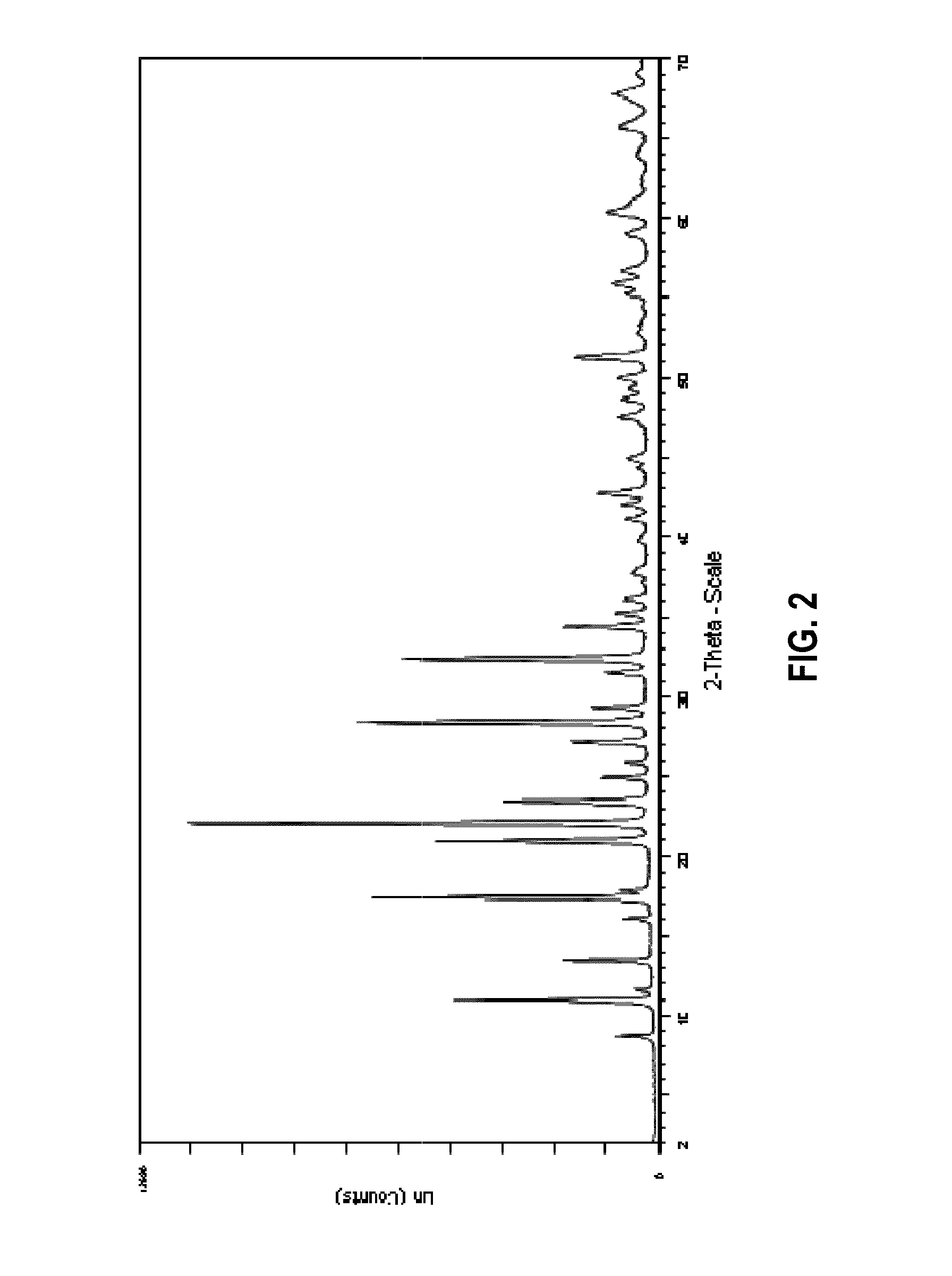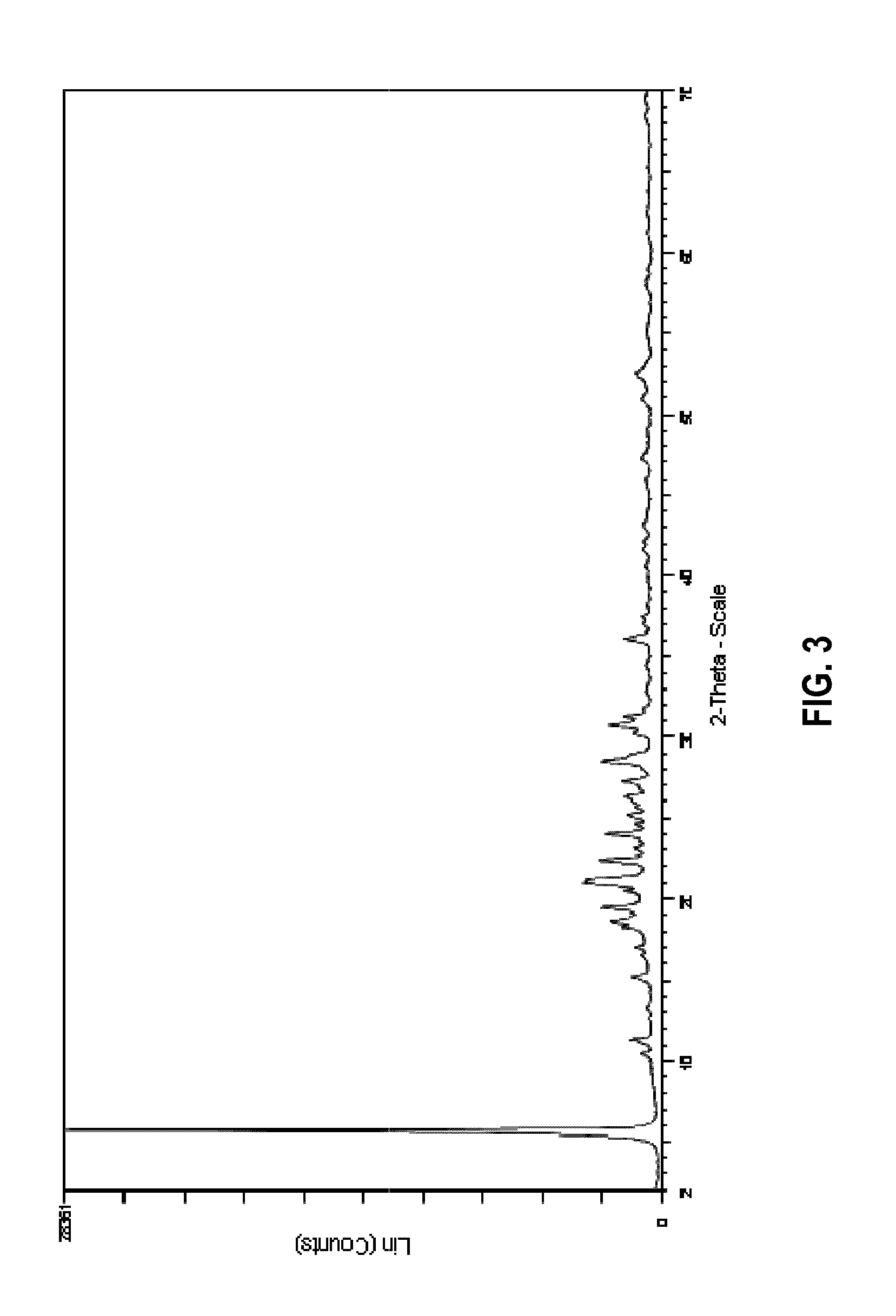Synthesis of Zeolitic Materials using N,N-Dimethyl Organotemplates
- Summary
- Abstract
- Description
- Claims
- Application Information
AI Technical Summary
Benefits of technology
Problems solved by technology
Method used
Image
Examples
example 1
Preparation of a Zeolitic Material Having a CHA Framework Structure Using the N,N-dimethylpiperidinium Cation as Structure Directing Agent
[0182]153.8 g of an aqueous solution having 24.0 wt.-% of N,N-dimethylpiperidine hydroxide were weighed into a Teflon® receptacle, after which 1.4 g of NaAlO2 were added and the resulting mixture stirred for 10 min. A total of 14.8 g of fumed silica (Aerosil 200) were then added to the mixture while stirring, and the resulting mixture stirred for an additional 15 min to afford a pale white translucent mixture having a pH of 13.7. The mixture was then transferred to an autoclave and crystallized at 150° C. for 120 h (5 days). After having let the reaction mixture cool to room temperature, the clear solution containing a white solid obtained as the reaction product was filtered over a glass frit, and the residue washed with 2 l of distilled water. The white solid was then dried at 120° C. for 16 h to afford 4.3 g of a white powder.
[0183]Electron Pro...
example 2
Preparation of a Zeolitic Material Having an LEV Framework Structure Using the N,N-dimethylpiperidinium Cation as Structure Directing Agent
[0186]154.2 g of an aqueous solution having 24.0 wt.-% of N,N-dimethylpiperidine hydroxide were weighed into a Teflon® receptacle, after which 0.9 g of NaAlO2 were added and the resulting mixture stirred for 10 min. A total of 14.8 g of fumed silica (Aerosil 200) were then added to the mixture while stirring and the resulting mixture stirred for an additional 15 min to afford a pale white translucent mixture having a pH of 13.7. The mixture was then transferred to an autoclave and crystallized at 150° C. for 120 h (5 days). After having let the reaction mixture cool to room temperature, the clear solution containing a white solid obtained as the reaction product was filtered over a glass frit, and the residue washed with 2 l of distilled water. The white solid was then dried at 120° C. for 16 h to afford 4.3 g of a white powder.
[0187]In FIG. 2, t...
example 3
Preparation of a Zeolitic Material Having a Layered Structure Using the N,N-dimethylpiperidinium Cation as Structure Directing Agent
[0188]141.9 g of an aqueous solution having 24.0 wt.-% of N,N-dimethylpiperidine hydroxide were weighed into a Teflon® receptacle, after which 0.6 g of H3BO3 were added and the resulting mixture stirred for 10 min. A total of 27.6 g of fumed silica (Aerosil 200) were then added to the mixture while stirring and the resulting mixture stirred for an additional 15 min to afford a pale white translucent mixture. The mixture was then transferred to an autoclave and crystallized at 150° C. for 120 h (5 days). After having let the reaction mixture cool to room temperature, the clear solution containing a white solid obtained as the reaction product was filtered over a glass frit, and the residue repeatedly washed with distilled water. The white solid was then dried at 120° C. for 16 h to afford 14 g of a white powder.
[0189]In FIG. 3, the X-ray diffraction (XRD...
PUM
| Property | Measurement | Unit |
|---|---|---|
| Temperature | aaaaa | aaaaa |
| Time | aaaaa | aaaaa |
| Structure | aaaaa | aaaaa |
Abstract
Description
Claims
Application Information
 Login to View More
Login to View More - Generate Ideas
- Intellectual Property
- Life Sciences
- Materials
- Tech Scout
- Unparalleled Data Quality
- Higher Quality Content
- 60% Fewer Hallucinations
Browse by: Latest US Patents, China's latest patents, Technical Efficacy Thesaurus, Application Domain, Technology Topic, Popular Technical Reports.
© 2025 PatSnap. All rights reserved.Legal|Privacy policy|Modern Slavery Act Transparency Statement|Sitemap|About US| Contact US: help@patsnap.com



